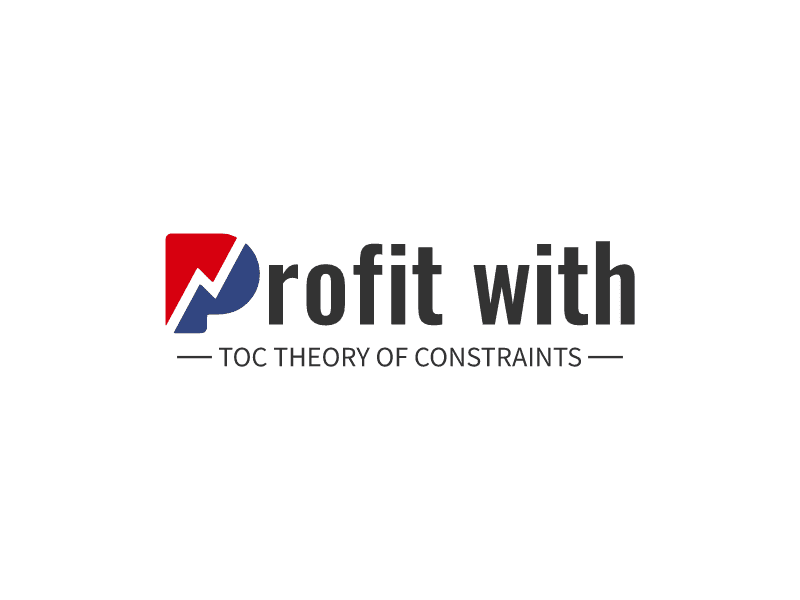Benefits from the Theory of Constraints
In a major literature survey by Mabin and Balderstone, published quantitative results for 82 organizations were presented (Mabin, V. J., and Balderstone S. J., (2000) The world of the theory of constraints: a review of the international literature. St. Lucie Press, pp 11-12). From this, mean values for improvement could be derived for between 30 and 32 companies.
The results are summarized as follows.
Lead time mean reduction – 70%Inventory level mean reduction – 49%Revenue/throughput/profit mean increase – 76% Do You Need More Convincing?
In a comprehensive research paper titled "A Review of Goldratt's Theory of Constraints (TOC) - Lessons from the International Literature," conducted by Steven J. Balderstone and Victoria J. Mabin of Victoria University of Wellington, New Zealand, the effectiveness of Goldratt's Theory of Constraints (TOC) was extensively examined. The research encompassed an extensive literature review and analysis of practical applications of TOC, revealing significant insights.
This research indicates that TOC has shown remarkable effectiveness, with no reported failures among the surveyed cases. Notable operational improvements were observed, including substantial reductions in lead times and cycle times and improved due date performance. Furthermore, TOC was associated with a reduction in inventory levels, emphasizing the impact of minimizing lead times within a Drum-Buffer-Rope system. The research also supports the correlation between lead time and inventory reduction, aligning with the claims of Goldratt and Fox.
Financially, TOC yielded impressive results, with organizations reporting substantial increases in revenue or throughput. The study underscores the challenges in overcoming resistance to change and behavioural tendencies during TOC implementation. Additionally, the paper highlights the growing interest in TOC, particularly in recent years, and its expanding applicability to various sectors, including distribution, marketing, project management, and administrative functions. Key findings and trends from the research:1. TOC Effectiveness: The study reveals that TOC is highly effective, with no reported failures or disappointing results among the surveyed cases.2. Operational Improvements: TOC application resulted in significant operational improvements, including a mean reduction in lead times of 69%, a mean reduction in cycle times of 66%, and a mean improvement in due date performance of 60%.3. Inventory Reduction: TOC was associated with a mean inventory reduction of 50%, emphasizing the impact of reducing lead times in a Drum-Buffer-Rope system.4. Correlation: The research supports the correlation between lead time and inventory reduction in TOC, validating Goldratt and Fox's claims.5. Financial Performance: On the financial front, organizations reported impressive improvements. Revenue or throughput saw a mean increase of 68% (excluding outliers), while the combined financial variable (revenue, throughput, profit) showed a mean increase of 82%.6. Behavioural Challenges: Overcoming resistance to change and addressing behavioural tendencies were identified as major challenges in TOC implementation.7. Growth in Interest: The study highlights a surge in interest in TOC, particularly in recent years.
Applications Beyond Manufacturing: TOC is expanding into various sectors, including distribution, marketing, project management, and administrative functions. Multi-Methodology Approaches: Many organizations are combining TOC with other methodologies, seeking synergies from multi-methodology approaches. This research demonstrates that TOC is a powerful philosophy for improving operations and financial performance, and it offers valuable insights for organizations seeking to optimize their processes and overcome constraints.
Lead time mean reduction – 70%Inventory level mean reduction – 49%Revenue/throughput/profit mean increase – 76% Do You Need More Convincing?
In a comprehensive research paper titled "A Review of Goldratt's Theory of Constraints (TOC) - Lessons from the International Literature," conducted by Steven J. Balderstone and Victoria J. Mabin of Victoria University of Wellington, New Zealand, the effectiveness of Goldratt's Theory of Constraints (TOC) was extensively examined. The research encompassed an extensive literature review and analysis of practical applications of TOC, revealing significant insights.
This research indicates that TOC has shown remarkable effectiveness, with no reported failures among the surveyed cases. Notable operational improvements were observed, including substantial reductions in lead times and cycle times and improved due date performance. Furthermore, TOC was associated with a reduction in inventory levels, emphasizing the impact of minimizing lead times within a Drum-Buffer-Rope system. The research also supports the correlation between lead time and inventory reduction, aligning with the claims of Goldratt and Fox.
Financially, TOC yielded impressive results, with organizations reporting substantial increases in revenue or throughput. The study underscores the challenges in overcoming resistance to change and behavioural tendencies during TOC implementation. Additionally, the paper highlights the growing interest in TOC, particularly in recent years, and its expanding applicability to various sectors, including distribution, marketing, project management, and administrative functions. Key findings and trends from the research:1. TOC Effectiveness: The study reveals that TOC is highly effective, with no reported failures or disappointing results among the surveyed cases.2. Operational Improvements: TOC application resulted in significant operational improvements, including a mean reduction in lead times of 69%, a mean reduction in cycle times of 66%, and a mean improvement in due date performance of 60%.3. Inventory Reduction: TOC was associated with a mean inventory reduction of 50%, emphasizing the impact of reducing lead times in a Drum-Buffer-Rope system.4. Correlation: The research supports the correlation between lead time and inventory reduction in TOC, validating Goldratt and Fox's claims.5. Financial Performance: On the financial front, organizations reported impressive improvements. Revenue or throughput saw a mean increase of 68% (excluding outliers), while the combined financial variable (revenue, throughput, profit) showed a mean increase of 82%.6. Behavioural Challenges: Overcoming resistance to change and addressing behavioural tendencies were identified as major challenges in TOC implementation.7. Growth in Interest: The study highlights a surge in interest in TOC, particularly in recent years.
Applications Beyond Manufacturing: TOC is expanding into various sectors, including distribution, marketing, project management, and administrative functions. Multi-Methodology Approaches: Many organizations are combining TOC with other methodologies, seeking synergies from multi-methodology approaches. This research demonstrates that TOC is a powerful philosophy for improving operations and financial performance, and it offers valuable insights for organizations seeking to optimize their processes and overcome constraints.
